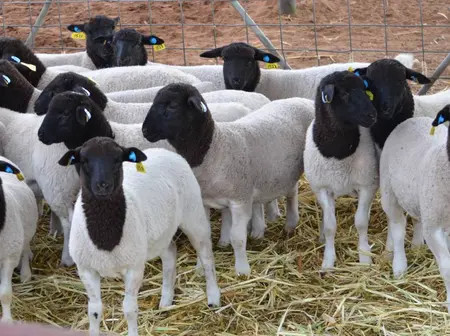Sheep farming is one of the most rewarding livestock businesses if managed efficiently. This means that to thrive in this venture, a farmer must have the right knowledge, skills, and management practices.
According to the Kenya National Bureau of Statistics (KNBS) sheep farming contributed Sh56.4 billion to the national GDP in 2019.
As per the latest available data, the livestock sector, encompassing sheep farming, contributes over 10 percent to Kenya’s GDP.
The increasing demand for sheep meat, wool, and other by-products has spurred growth within the industry, making it a viable avenue for agricultural investment.
However, it is worth noting that successful sheep farming hinges on cost-effective practices, prudent budgeting, and a keen awareness of market dynamics.
As such, farmers are advised to be keen on balancing costs by observing factors such as the initial investment, ongoing feed expenses, healthcare, and marketing.
Typically, sheep in Kenya take about 6-12 months to reach maturity, depending on the breed and management practices. iMaDe FARMs, an agriculture expert shared some crucial things to observe when investing in sheep farming.
Breed Selection
Not all sheep are created equal! Choosing the right breeds for your climate, purpose (meat or wool), and market demand is critical. Some breeds are fast growers, others produce higher-quality wool.
Beyond the popular Dorper breed, several other sheep breeds thrive in different parts of Kenya. The Blackhead Persian, known for its adaptability to arid regions, exhibits resistance to common diseases.
On the other hand, the East African Merino, prized for its wool quality, thrives in cooler climates.
Housing & Shelter
A proper shelter protects the flock from extreme weather, predators, and disease. As such, the structures must be clean, dry, and well-ventilated to keep the sheep healthy and reduce stress, which directly impacts growth and reproduction.
Nutrition & Feeding
Sheep undergo different developmental stages, each requiring specific nutritional considerations. Lambs, for instance, need a diet rich in protein for growth. Pregnant ewes and lactating mothers, on the other hand, require additional nutrients to support their reproductive functions.
When feeding the animals, farmers are encouraged to balance forage, grains, and supplements based on age, purpose, and breed. Proper nutrition improves growth, fertility, and wool quality.
Health Management
Sheep are prone to diseases like foot rot, parasites, and pneumonia. Preventive care, vaccination, and timely treatment are key to keeping the flock strong.
Breeding and Lambing
Good breeding practices ensure healthy lambs and a steady income. Monitor mating, pregnancy, and lamb care closely. Record-keeping helps track performance and improve your flock over time.
Marketing and Profitability:
Knowing where and how to sell your sheep or products can make a huge difference. From local markets to value-added products like wool, cheese, or meat, smart marketing maximizes your returns

Leave a Reply